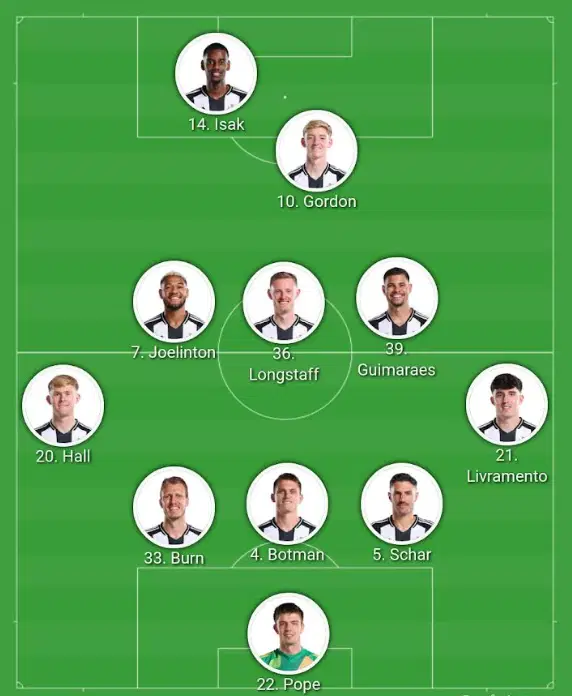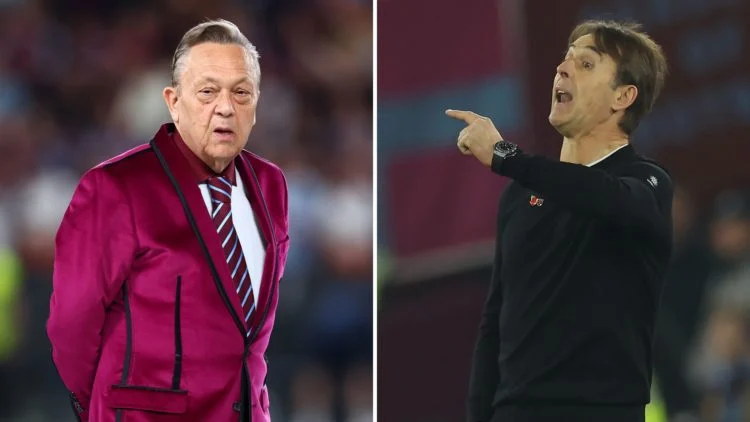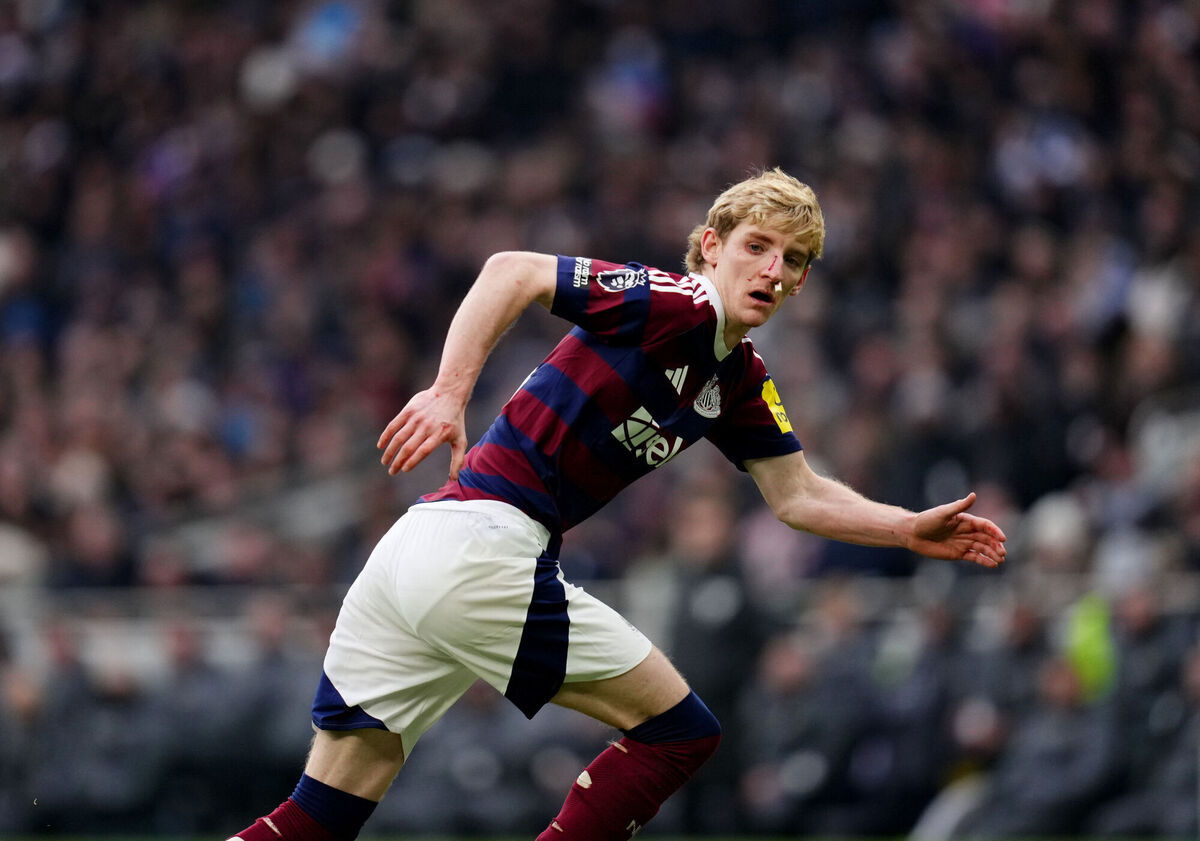As I sit here, pen in hand, gazing at a piece of paper, I find myself holding in my grasp what feels like a gateway to Newcastle United’s footballing destiny—a team sheet. Yes, a simple sheet of paper, yet it symbolizes the collective hopes, dreams, and frustrations of an entire fanbase.
Will this sheet, this scribbled list of names, hold the answers we so desperately seek to the seemingly endless puzzle of our team’s challenges? The truth is, I have no idea, and if I’m being honest, neither do you. And perhaps that’s for the best because we, the impassioned spectators of the game, are not privy to the day-to-day realities of the training ground. We don’t witness the sweat, the camaraderie, or the nuances of form and fitness that Eddie Howe and his coaching staff live and breathe. Let’s face it: we’re fans. And as fans, we bring with us a heady cocktail of passion, bias, and—dare I say it—a touch of irrationality.
It’s human nature to have favorites, isn’t it? Certain players light up the pitch for us, while others, through no fault of their own, might leave us cold. Perhaps it’s their style, their demeanor, or maybe just a single mistake that we can’t quite forgive. Yet, these biases often cloud our judgment, especially when trying to solve complex problems like the one facing Newcastle United right now.
If I were to venture a guess—a dangerous game, I know—on what most fans would pinpoint as the root of our current predicament, I suspect the majority would land squarely on the midfield. Ah, the midfield! The beating heart of any football team, and yet ours, it seems, has been fluttering irregularly for months now. It’s not a new problem, mind you. In fact, if I close my eyes and think back to this time last year, I’m fairly certain we were having the exact same conversation.
So, here we are again, staring at a midfield conundrum that remains unsolved. No shiny new signings have graced us to shake things up. The personnel is more or less the same, with one notable exception: the return of Sandro Tonali, now free from suspension. Tonali, a player of undoubted quality, has nevertheless found himself the subject of debate. Can he coexist with our talismanic Bruno Guimarães in the center of the park? The skeptics say no, and admittedly, the evidence on the pitch has often supported their claim. The results against Chelsea (in the Cup), Arsenal, and Nottingham Forest seem to suggest that playing them together from the start doesn’t yield the desired fluidity. Instead, we’ve seen success when one or the other begins the game, with substitutions and tactical tweaks altering the dynamic later on.
And then, of course, there’s Sean Longstaff. The marmite of our midfield, if ever there was one. Love him or loathe him, you can’t deny that he started in all three of those aforementioned victories. Yet, he was also present in the defeat to West Ham, a loss I personally attribute more to the absence of Dan Burn than anything else.
The tactical debates among fans are as lively as ever. Just this morning, I found myself in a spirited discussion about the merits of a 4-4-2 formation. For my part, I can’t see Eddie Howe adopting it. It feels outdated, a relic of a bygone era. Howe’s preferred 4-3-3, with its fluidity and adaptability, seems far better suited to the modern game. Of course, one man’s 4-3-3 is another man’s 4-5-1, depending on how you interpret the roles, but I digress.
If I were to indulge my own tactical preferences, I’ve always been partial to a 5-3-2 setup. Yes, I know the criticisms: it’s too defensive, too cautious. And there’s merit to those arguments. I can still recall the disasters of the Kenny Dalglish era when such a formation often spelled doom. But in theory, it offers balance and solidity—a tempting prospect for a team struggling to find its footing.
So, with all that in mind, I’m going to stick my neck out and propose what I believe could be an ideal Newcastle United lineup. Brace yourselves, because this is sure to provoke some strong reactions. But hey, isn’t that what being a football fan is all about? Let’s dive in.
The back three is a no-brainer. Or at least it would be if Sven Botman were available. Without him, the options are less inspiring. Could Lloyd Kelly fill the void? I’m skeptical, but in a back three, he might benefit from the added protection.
On the flanks, we have the dynamic duo of Lewis Hall and Tino Livramento. These two are the future of Newcastle United—and perhaps even England—if they continue on their current trajectories. Their attacking prowess down the wings is a joy to behold.
Up front, Alexander Isak leads the line, with Anthony Gordon playing just off him. Gordon’s versatility allows him to drift wide and cut inside at will, a tactic that has served us well in recent games.
And now, the midfield. The eternal problem. For me, Joelinton has to be in there. His physical presence is invaluable, not as a destroyer—that role would see him rack up cards faster than a shopaholic at Christmas—but as a box-to-box force who can cover for Hall when he ventures forward. Alongside him, I’d opt for Sean Longstaff. I know, I know—this will divide opinion. Feel free to swap him out for Joe Willock if you prefer. Finally, there’s Bruno. Our captain, our playmaker, our heartbeat. I remain unconvinced that he and Tonali can coexist effectively, so I’d leave Tonali on the bench for now.
This setup, while controversial, has the added benefit of sidelining the polarizing figures of Miguel Almirón and Jacob Murphy, whose contributions have often been inconsistent. It’s harsh on Harvey Barnes, I admit, but he’s struggled to cement a starting spot anyway. Callum Wilson provides a viable alternative to Isak up front, and if needed, we can revert to a more traditional two-striker setup mid-game.
The bench, stacked with talent—Dubravka, Kelly, Trippier, Tonali, Wilson, Almirón, Willock, Barnes, and young William Osula—offers plenty of options to change the game if required.
Now, let me be clear: this lineup is unlikely to materialize. Eddie Howe is not one for radical mid-season changes, and with Botman still sidelined, the timing isn’t ideal. But as I’ve laid out, this approach feels like the most balanced and creative use of the resources at our disposal. It’s a vision, perhaps an idealistic one, but one I believe could address our current challenges.
Will it happen? Probably not. But a fan can dream, can’t they?



